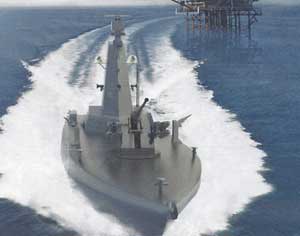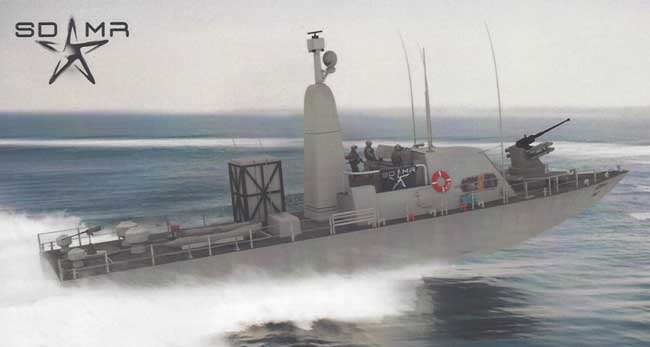


As domestic economies change into a global market, dependent on the ocean for energy, food and transportation, the open seas becoming contested areas, and pirates, outlaws and terrorists using isolated littorals as safe haven, prowling waterways and the open sea along international merchant routes, no wonder that governments are looking for new means to deal with the new challenges. Defense-Update reports from IMDEX 2013.
Changing interest span from securing off-shore assets throughout littoral and Economical Exclusion Zone (EEZ), protecting economical rights including fishery, mineral resources and merchant marine routes. Coastal protection, particularly addressing terror threats and infiltration from the sea, is also critical in defending urban centers, key infrastructure, port facilities, power stations and other strategic assets.
With the rising costs of maritime security, government agencies are interested in smaller, highly versatile boats that could operate effectively in peacetime, emergency and at war. Boats that can effectively chase smugglers, and human traffickers, defeat well-armed terror attacks and become part of the nation’s maritime power in time of war.
This is an excerpt of an article currently reserved for members only.
An affordable ‘interceptor’ type boat, Mini-Dvora enables fast and highly responsive teams to efficiently cover large areas from forward operating bases. Requiring low maintenance and minimal shore support, these boats can efficiently operate either under naval flotillas or independently, from small port facilities under coast guard control. Forward deployment can dramatically save transit time back and forth to their patrol areas, further improving utilization and lowering operating cost. With smaller boats, lower fuel costs, and minimal crews, life cycle cost of small boats is significantly lower than larger vessels. Moreover, preventive maintenance is also shorter – requiring few weeks every two years to bring the boat back in shape.
The SDMR variant uses a the Super-Dvora Mk III hull designed with a modular approach, enabling the customer to integrate specific mission systems, thus modifying the boat for new missions. These include coastal defense, surface attack, command and control etc.
The Navguard radar developed by IAI Elta Systems is a common system shared by all configurations. This radar detects all types of threats, including guided or unguided missiles fired at the boat. The system is configured in a four-panel scheme, fully integrated with signal processing and target acquisition necessary to drive active protection systems. The system’s modules are connected via fiber-optical links, for maximum speed and security. The system uses fiber-optical has already been tested at sea, proving excellent results. A unique capability offering the SDMR a high level of survivability, particularly against asymmetric threats,
In addition to self-protection, the boat is also equipped with a stabilized electro-optical payload with an integrated laser designation capability, supporting precision attack weapons. Other sensors include passive EO, communications (COMINT) and other electronic signals detector ESM.
According to Ramta, on the SMDR, a crew of 10 can effectively fulfill all tasks. The key to such efficiency is newly designed Combat Information Center (CIC) and operating consoles. Instead of dedicating specific console for each task (detection, identification, defensive systems, offensive systems, situational display, communications etc.) IAI introduced a common, compact operating station integrating all functions into a single display, similar to those used in the cockpit of fighter aircraft. Specific tasks are shown on different displays, integrated into the situational picture, which also supports routine operations. A typical CIC layout in the SDMR comprises three common and interchangeable workstations that support regular operations in peacetime and can be easily reconfigured into detection, defense and offense workstations at war. To simplify these tasks the system employs extensive automation to simplify and expedite certain processes by minimizing user interactions.

Eventually, IAI/Ramta plans to expand the Super Dvora to unmanned surface vessels, extending capabilities developed and fielded by the company in the past 30 years. Such autonomous vessels would establish routine patrols, generate the marine situational picture required for operation and security, supporting manned and unmanned operators with maximum security at an affordable cost.
Source: Defense-Update
















